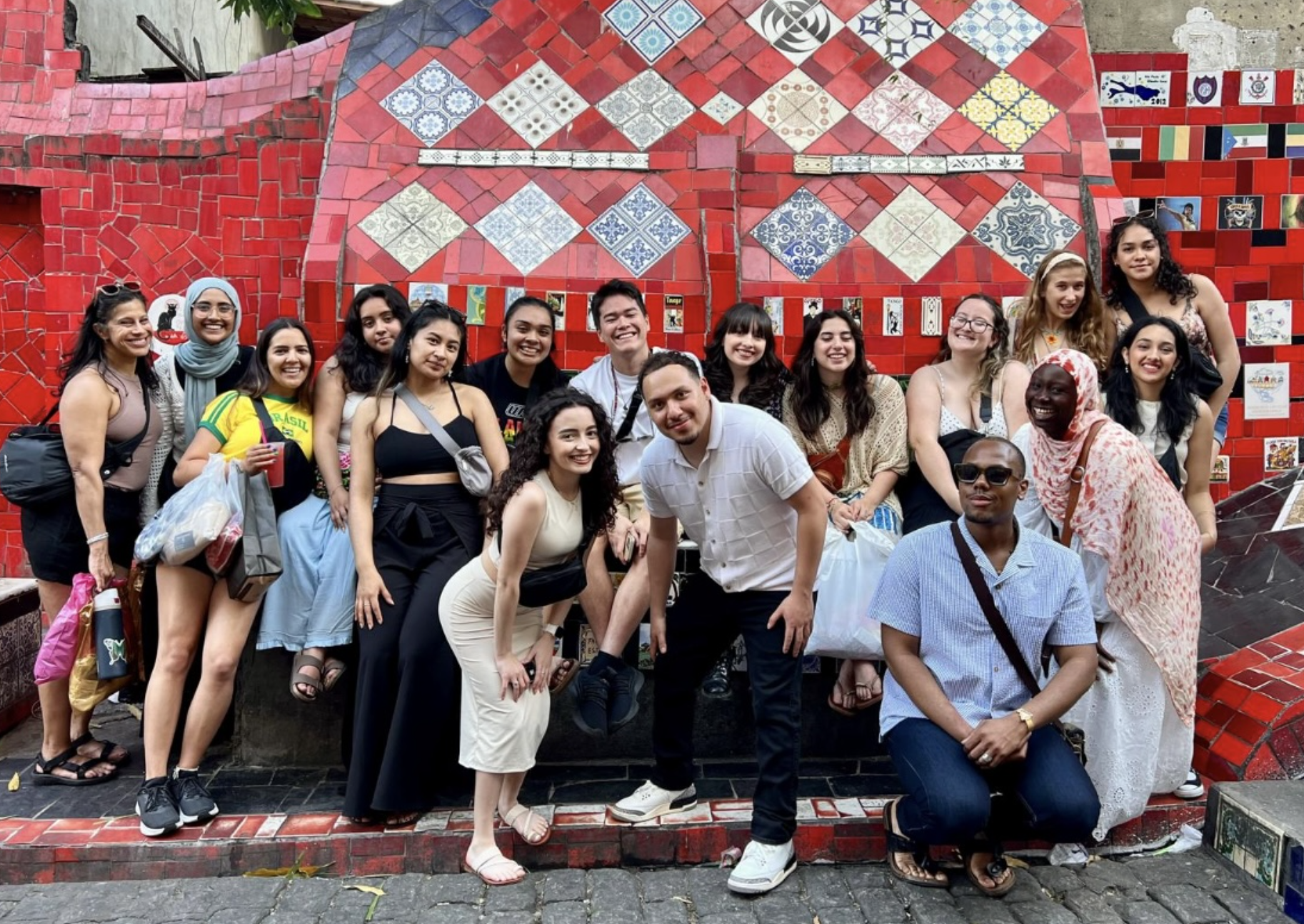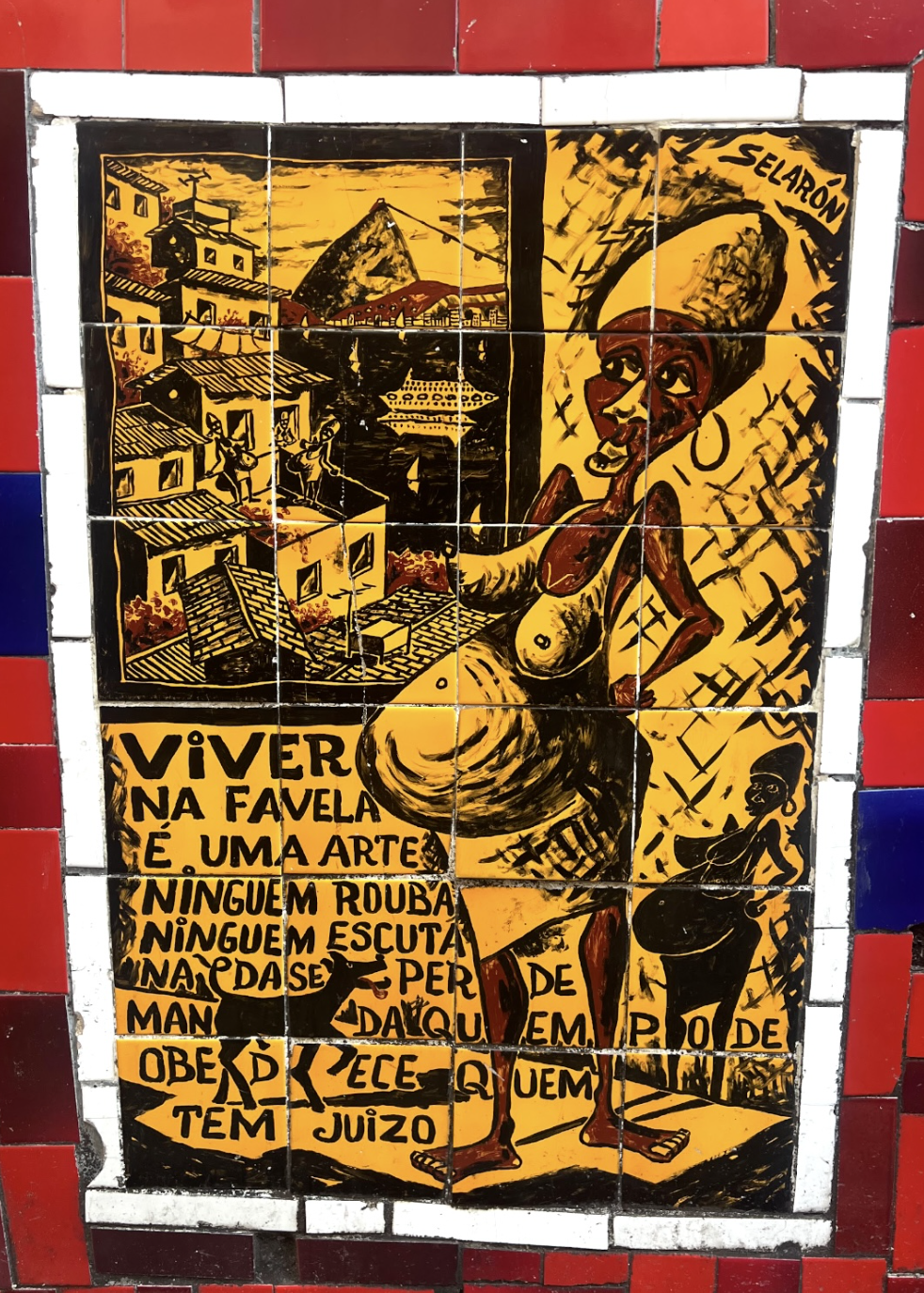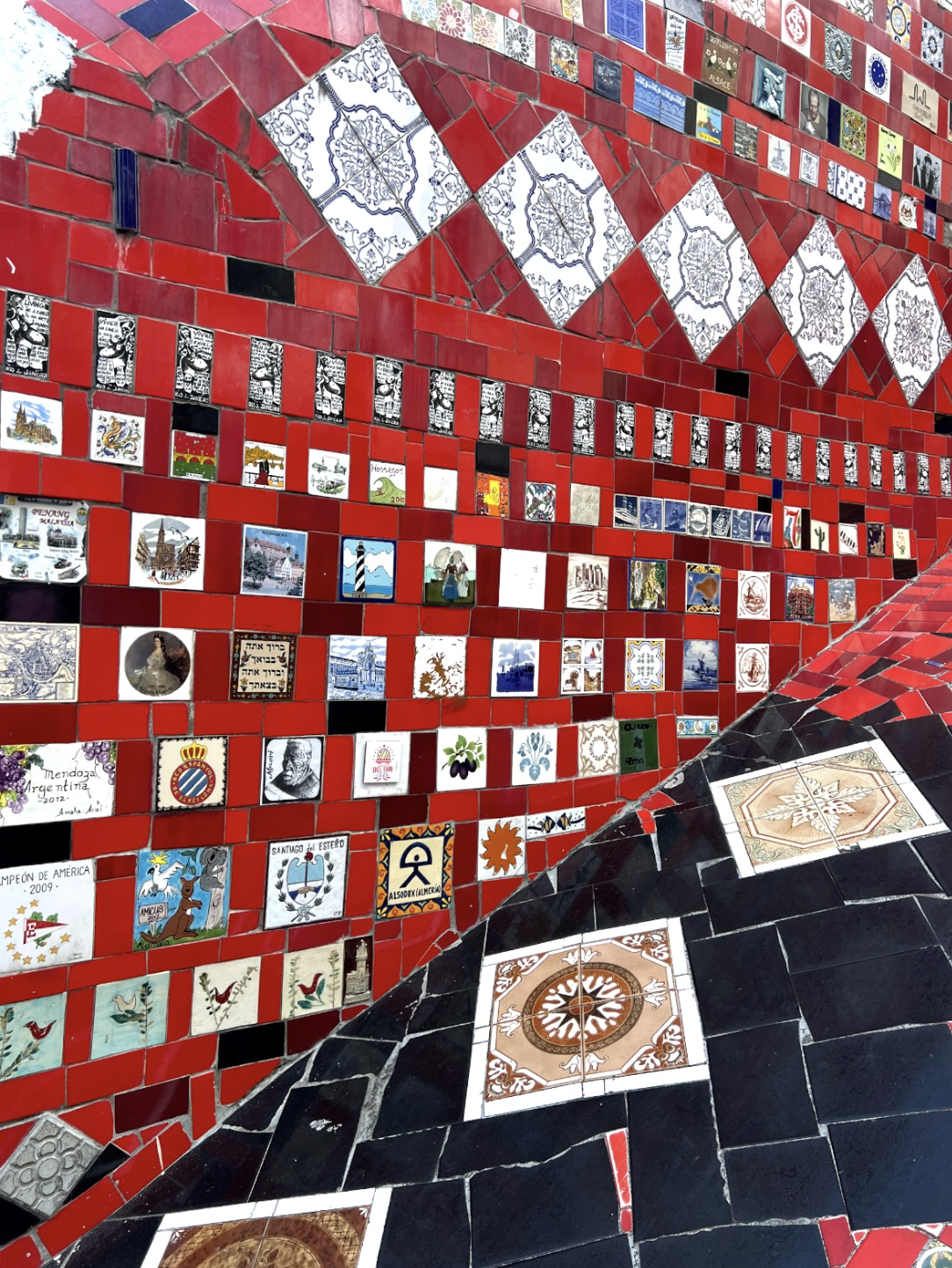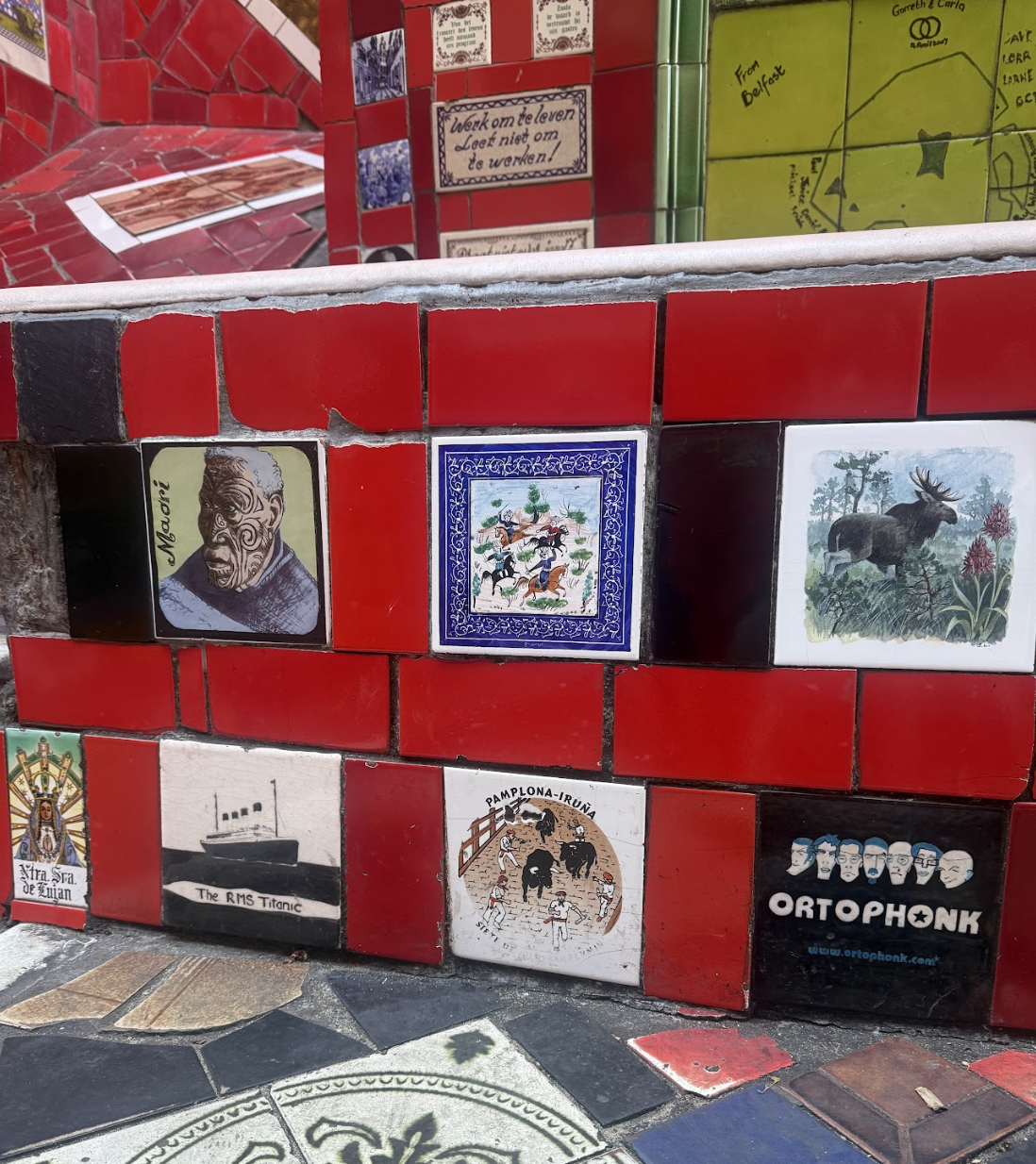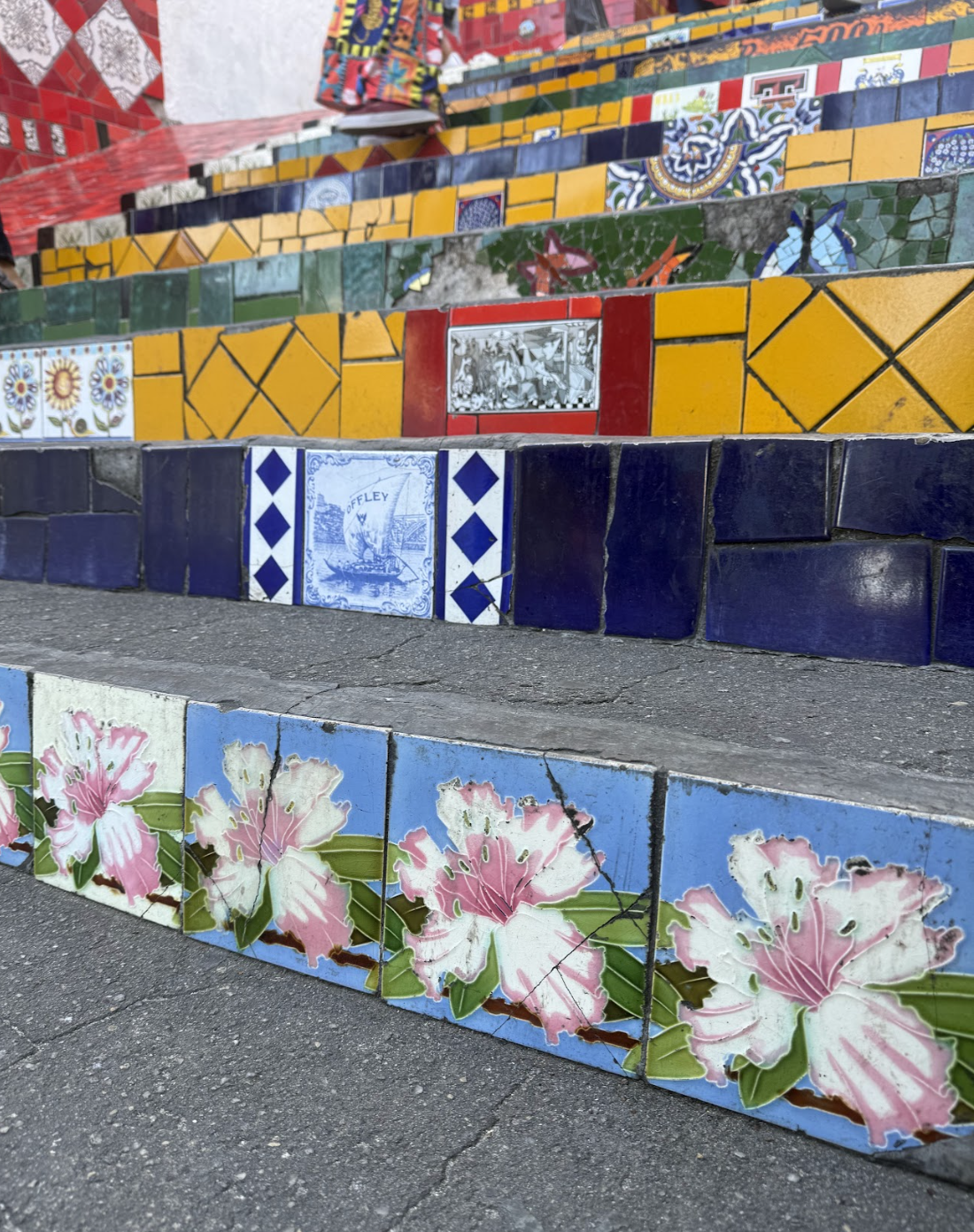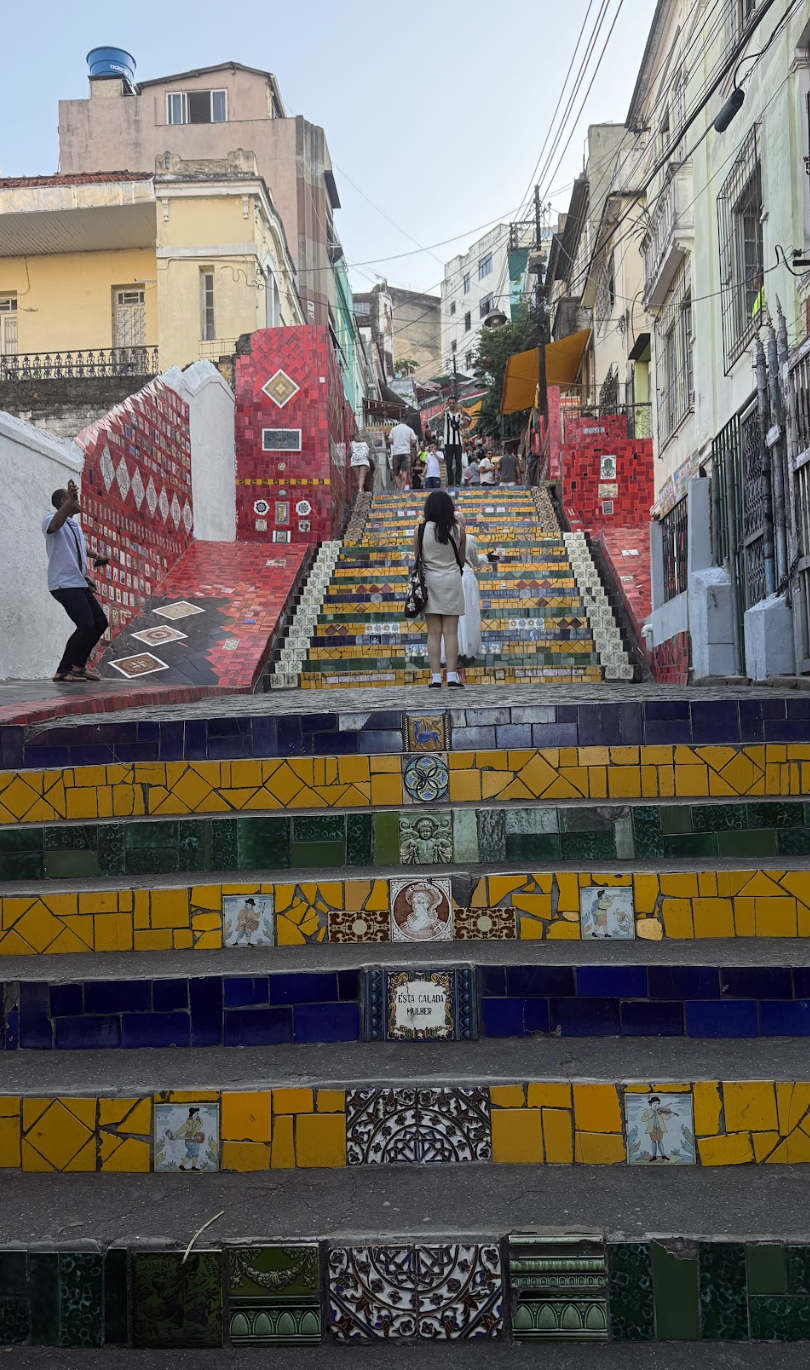Escadaria Selaron
Angeleen Ukleja
During our time in Brazil, one of the most visually stunning and popular places we visited was the famous Selaron Stairs, also known as Escadaria Selaron, in Rio de Janeiro. The vibrant staircase draws people in from all over the world, and it is easy to see why. It is colorful, energetic, and full of life. Tourists line up for photos in nearly every corner of the steps, striking poses in front of specific tiles, dancing to music playing nearby, and sipping drinks from local vendors under the sun. The atmosphere feels like a celebration. But what makes this place truly special is the story behind it, a story that many visitors sadly overlook.
Our guide made it clear that although the Selaron Stairs are now one of Rio’s most photographed and celebrated landmarks, they began as a deeply personal and creative journey. The stairs were created by Jorge Selarón, an artist originally from Chile who moved to Brazil and made the neighborhood of Lapa his home. He discovered an old, broken staircase outside his house and decided to transform it into something beautiful, not just for himself but also for his community.
At first, Selaron began painting the stairs with bright, vivid colors. But the project soon grew into something much larger. One day, while walking through a local market, he came across some old and unique tiles. That discovery sparked the idea to decorate the steps with tiles instead of only using paint. As he continued his work, the stairs slowly transformed into a massive art piece filled with thousands of colorful tiles. Eventually, the staircase featured more than 2,000 tiles from over 60 countries.
One of the most powerful and mysterious elements of Selaron’s work is the recurring image of a Black woman, often shown with a round belly. He painted this figure more than 30,000 times. She appears throughout the staircase, watching over the space in silence. When asked about her identity, Selaron always refused to share her name. He only said that she was someone from his past who had great meaning to him. Her image became a symbol of his emotions, his memories, and his art. To this day, no one knows her true story, which makes her presence even more intriguing.
Standing on the stairs, surrounded by music, people, and the bright spirit of Rio, it is easy to get caught up in the fun and miss the depth of the place. Our guide reminded us that many tourists stop by for photos but leave without ever learning about Jorge Selaron or his vision. The stairs are not just a beautiful backdrop. They are the result of years of work, filled with personal meaning and community love. Selaron dedicated his life to this staircase. His art was a way of expressing himself, his love for Brazil, and the memories that shaped him.
Visiting the Selaron Stairs was not just a photo opportunity. It was a lesson in looking beyond what we first see. It reminded me that behind every landmark is a person and a story. Jorge Selarón took something ordinary and made it extraordinary. Through tiles and color, he turned a broken staircase into a symbol of beauty and creativity.
As someone who wants to be an educator, this experience made me think about how important it is to look beneath the surface. Every place, every community, and every piece of art carries stories that deserve to be told and understood. When we slow down, ask questions, and listen closely, we can learn so much more than we expected. Some of the most meaningful lessons come from places like tiled staircases in a city full of life, where a single artist’s vision created something lasting and unforgettable.
